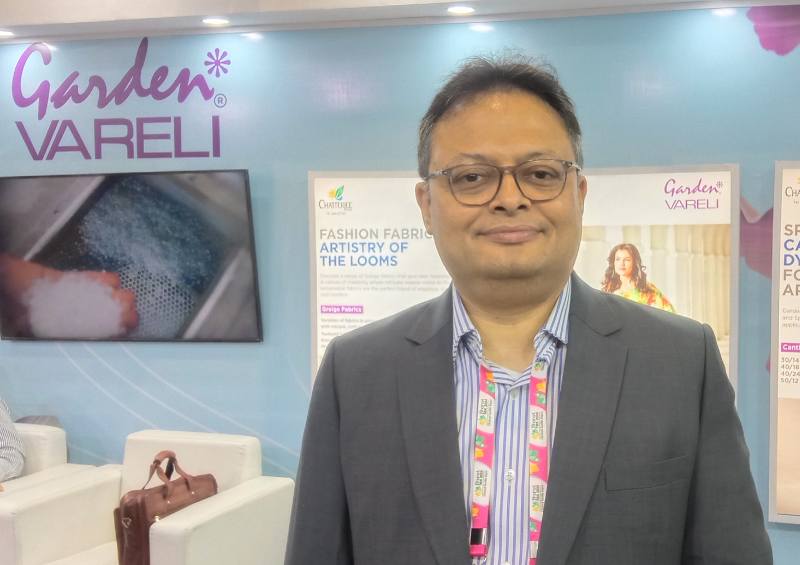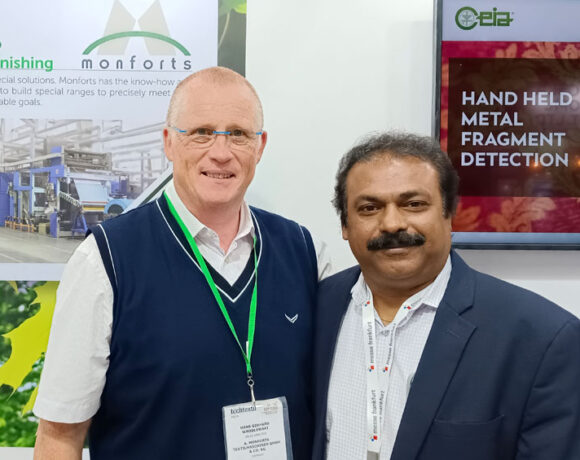Garden Silk’s Renewed Focus On Modernity And Youthfulness Will Drive Business Growth And Profitability: Amitava Banerjee

In an exclusive interview with Textile Insights, Amitava Banerjee shares insights into the company’s recent investments and strategic initiatives aimed at enhancing competitiveness and achieving substantial growth. From technological upgrades to market rebranding efforts, Banerjee discusses how Garden Silk navigated challenges, including the impact of the COVID-19 pandemic, and outlines the company’s vision for the future of the textile industry.
Could you elaborate on Garden Silk’s recent investments and strategic initiatives aimed at enhancing its competitiveness and achieving substantial growth, particularly focusing on technological upgrades, cost reduction measures and forward integration plans?
Garden Silk Ltd, which was acquired by the TCG group almost three years ago, operates two units in Jolwa and Vareli. Recently, we invested approximately Rs 1250 crore, inaugurating a state-of-the-art FDY facility in Jolwa with a production capacity of 272 tonnes per day. Additionally, we made significant investments in high-voltage connections to reduce power costs. Our focus has been on upgrading technology and reducing operational costs, particularly through adoption of renewable energy and modernization of machinery. With these efforts, we aim to position the Jolwa complex as a highly competitive polyester yarn maker in the short term. As a backward integrated company, we plan to maximize the utilization of our PTA manufacturing facility in Haldia, targeting to consume 30% to 35% of the PTA produced there. We are also pursuing expansions and have applied for the PLI scheme for technical textiles. In Vareli, our focus on revitalizing the fabric, sari and dress material business aligns with our vision of exponential growth, leveraging increased production facilities and potential strategic partnerships. Overall, Garden Silk is poised for significant expansion and aims to achieve ambitious growth targets in the coming years.
How did Garden Silk navigate the challenges posed by the COVID-19 pandemic upon acquiring the company, particularly in terms of restructuring and reviving the fabric business?
When we acquired the company during the COVID-19 period in February-March 2020-2021, we faced significant challenges as the market had come to a halt. This led to a restructuring phase, including changes in personnel and operational strategies. The fabric business, in particular, suffered post-COVID, failing to reach pre-pandemic volumes. However, we’ve since made strides in rebuilding capacities, with increasing plant utilization and a newly appointed team focusing on efficiency and market outreach. Our vision for Vareli involves optimizing production through outsourcing and in-house strategies to facilitate rapid growth in the coming years.
How would you assess the current market conditions?
The market is currently experiencing a temporary slowdown, partly due to MSME payment issues and cheap fabric imports from China. However, I believe this phase will pass as demand picks up, especially with government support for the manmade textiles industry and efforts to explore alternative export markets. Despite the challenges, there’s optimism for growth, evidenced by investments in machinery and expansion across the textile value chain. While there’s a disturbance in the market, consumer demand remains relatively steady, indicating potential for a rebound once these issues are addressed.
How has the response been for Bharat Tex exhibition, especially considering Garden Silk’s initiative to rebrand and attract a younger demographic, moving away from its previous association with older generations?
The response here at Bharat Tex exhibition has been exceptionally positive, reflecting Garden Silk’s commitment to rebranding and appealing to a younger demographic. Recognizing the perception of the brand as outdated, we’ve undertaken a comprehensive rebranding effort, introducing vibrant blue colours and the concept of “Garden of Tomorrow.” Our aim is to rejuvenate interest among millions of young people and re-engage with major exporters who may have overlooked our brand. With an extensive archive boasting 86,000 sari designs and decades of expertise in fabric manufacturing, we’re poised to reintroduce our products to the market and innovate based on market feedback. The significant footfall at the exhibition, comparable to international events, reaffirms our belief in the effectiveness of our approach.















